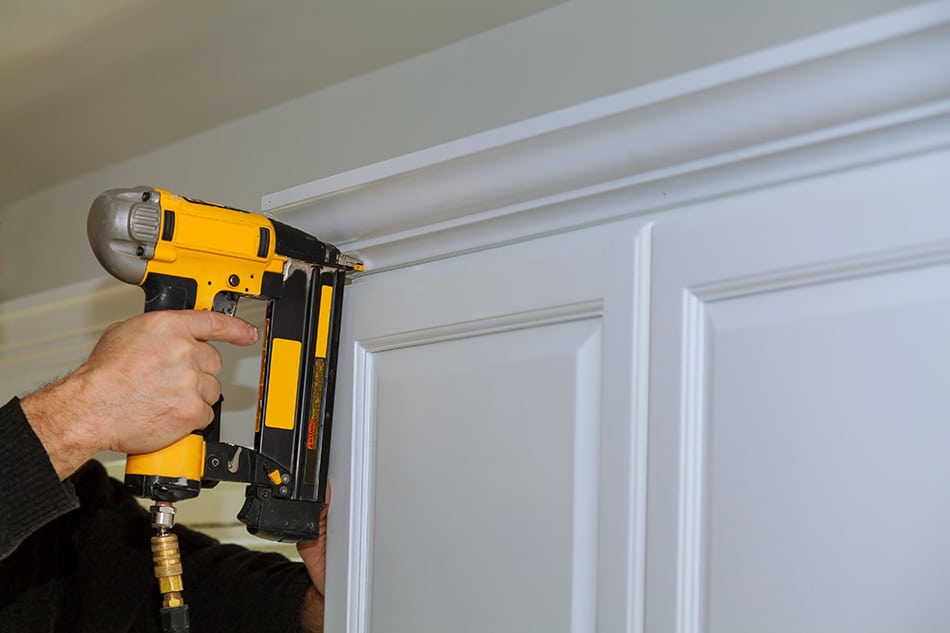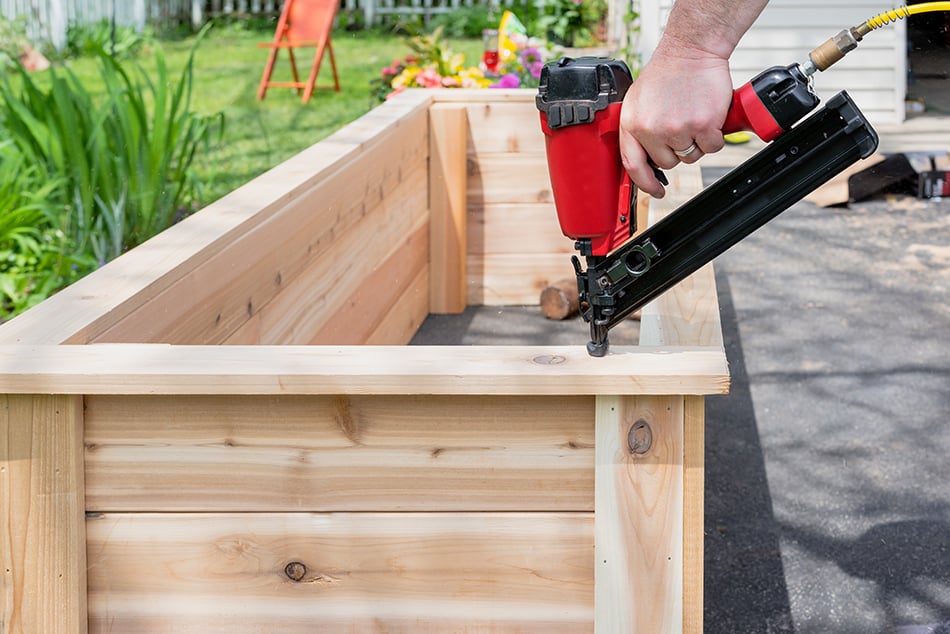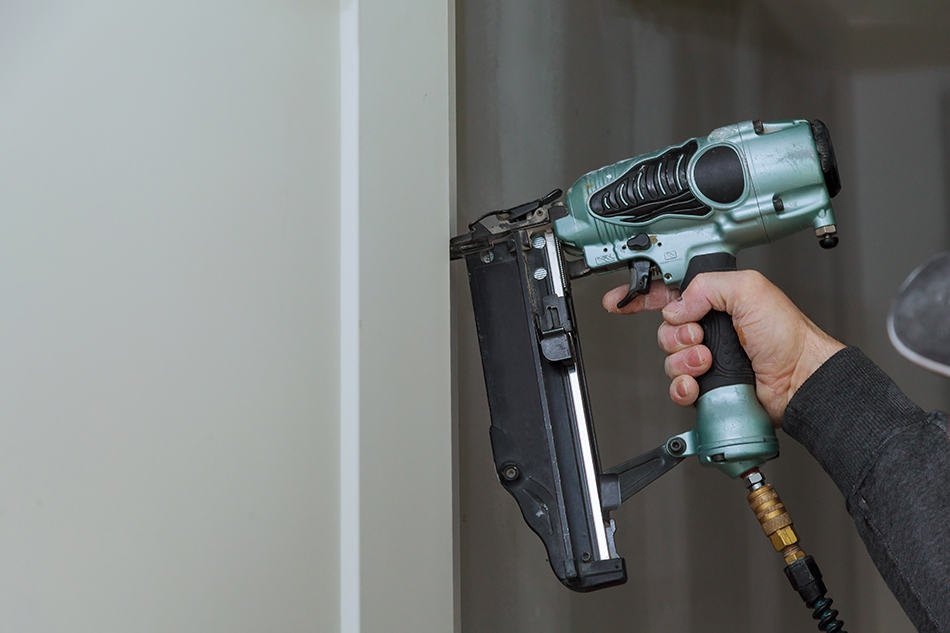Having an electric nail gun is beneficial, especially if you have a do-it-yourself home improvement or construction project. Compared to hammering nails by hand, using an electric nail gun is easier and safer. Plus, it offers greater precision.
However, what type of nail gun should you use? Today, there are two major types of nailers, which are straight and angled finish nailers. These two tools have several differences, especially in functionality. So, what are the differences between an angled finish nailer and a straight finish nailer?
Table of Contents
What is an Angled Finish Nailer?
An angled finish nailer uses an angled magazine. Keep in mind that this tool requires collated nails with an angle that corresponds to the nail gun’s magazine. There are two angled finish nailers, which are FN and DA styles. To be specific, an FN-style nail has an angle of about 25 degrees, while a DA-style nailer has an angle of around 34 degrees.
Pros:
Able to Reach Corners – An angled finish nailer has a magazine that is angled back. Because of this feature, you can drive the tool into tight spaces.
Lighter – An angled finish nailer is a bit smaller compared to straight nailers. For this reason, the angled version is easier to use because of its lighter weight.
Longer Magazine – An angled finish nailer has a longer magazine; thus, it can accommodate more nails compared to its counterpart.
Cons:
Size of the Nails – The size of the nails used by the nail gun can be a con or a pro, depending on the project you are working on. For instance, if you’re connecting fragile or thin materials, a 16-gauge nail is preferred. However, for bigger projects, the 15-gauge nail of an angled finish nailer is better.
Price – Compared to a straight finish nailer, an angled finish nailer is more expensive. Even so, their price difference is not that much.
What is a Straight Finish Nailer?
A straight finish nailer comes with a straight magazine, and it uses a 16-gauge nail. Its magazine is usually attached to the front of the nail gun. This feature makes it quite efficient; however, it also takes extra space.
Pros:
Nail Size – The nails used by a straight finish nailer are smaller, making it a great tool for connecting thin and fragile materials. However, if you’re working on a bigger project, using small nails will not be enough.
Price – A straight finish nailer is more affordable than an angled finish nailer.
Cons:
Difficult to Use – One of the main disadvantages of a straight finish nailer is that it is difficult to use, especially in tight spaces. Remember, its magazine is attached to the front; thus, you have less room to maneuver the tool.
The Difference between an Angled and a Straight Finish Nailer
Appearance
One way to tell the difference between an angled and straight finish nailer is through the alignment of their magazine. To be specific, an angled finish nailer has an angled magazine, while a straight nailer has a straight magazine.
Ability to Reach Tight Spaces
When it comes to the ability to reach tight spaces, an angled finish nailer is the clear winner. Remember, the magazine of this tool is angled. As such, it can reach tight areas without hindrances. On the other hand, a straight finish nailer has a straight magazine, which gets in the way. Also, it has a shorter nose, so it is unable to reach constricted areas.
Nail Size
As mentioned, the nail used by these two nail guns varies. To be specific, a straight finish nailer utilizes a small nail, which is a 16-gauge nail. On the other hand, an angled finish nailer uses bigger nails, specifically 15-gauge nails.
In terms of nail size, the nail gun that you will use will depend on your project. For instance, if you’re connecting thick materials, you’ll need stronger and bigger nails. As such, an angled finish nailer is preferred for bigger projects.
A straight finish nailer, on the other hand, is best suited for small projects. To be specific, this tool is preferred if you’re connecting thin or fragile materials. In fact, the thinner nails of a straight finish nailer can shoot deep into a block of wood without damaging its grain.
Weight
Compared to a straight finish nailer, an angled finish nailer has lighter weight. For this reason, the angled finish nailer is easier to use and carry. Aside from that, you can also use the angled version at elevated areas without too much strain and effort. A straight finish nailer, on the other hand, is bulkier. For this reason, it is cumbersome to carry around.
Acute Firing Ability
When it comes to firing nails at an angle, an angled finish nailer is a better tool. To explain further, this tool has an angled driver that allows it to shoot nails at an angle. As for a straight finish nailer, you can also use it to fire nails at an angle. However, you need to tilt the tip of the tool. Unfortunately, the nails can miss their target, which may result in unwanted accidents.
Price
In terms of price, an angled finish nailer is more expensive than a straight finish nailer. The reason is that the angled finish nailer is more functional than its straight counterpart. The same goes with the nails. A 15-gauge nail is more expensive than a 16-gauge nail.
Conclusion
After knowing the difference between an angled finish nailer and a straight finish nailer, we can conclude that an angled finish nailer is better than its straight counterpart. Even so, you have to remember that the type of electric nail gun that you will use will depend on your project.
For example, if you need to reach tight spaces, then an angled finish nailer is recommended. Aside from that, a straight finish nailer is preferred if you’re attaching thin or fragile materials, while an angled finish nailer is best for thick materials.


